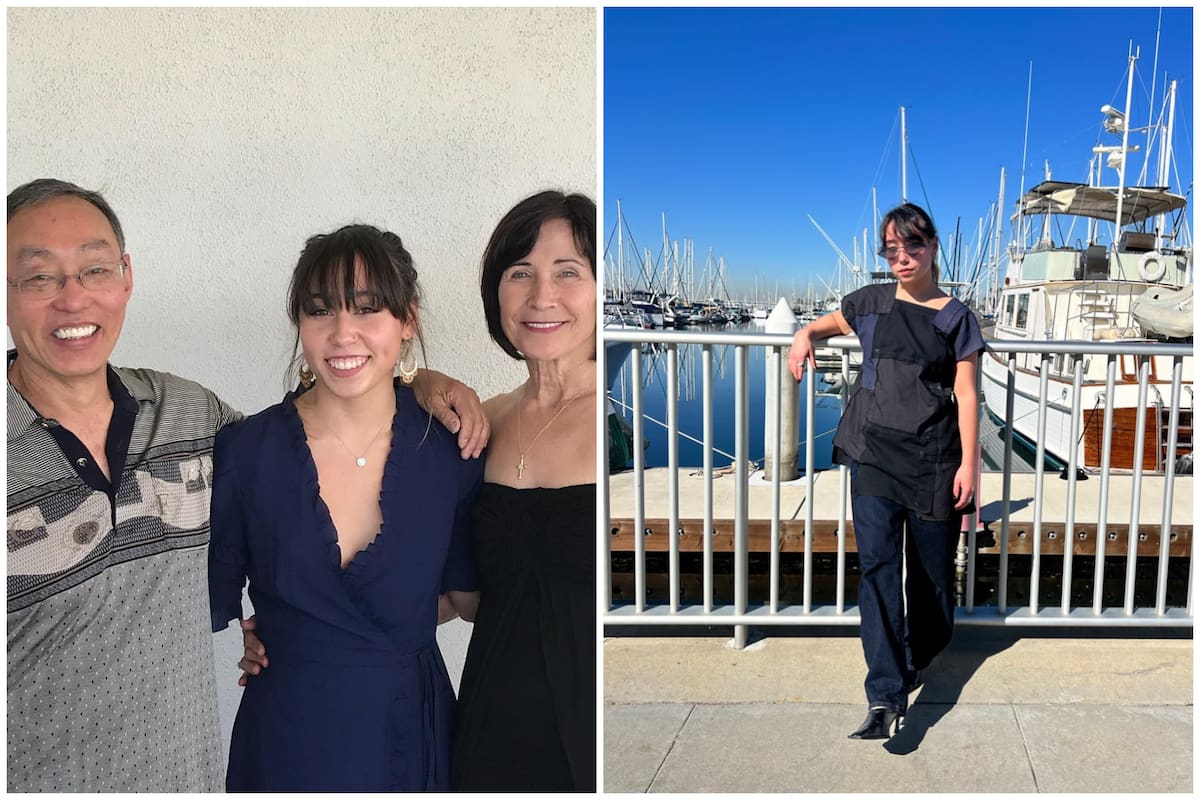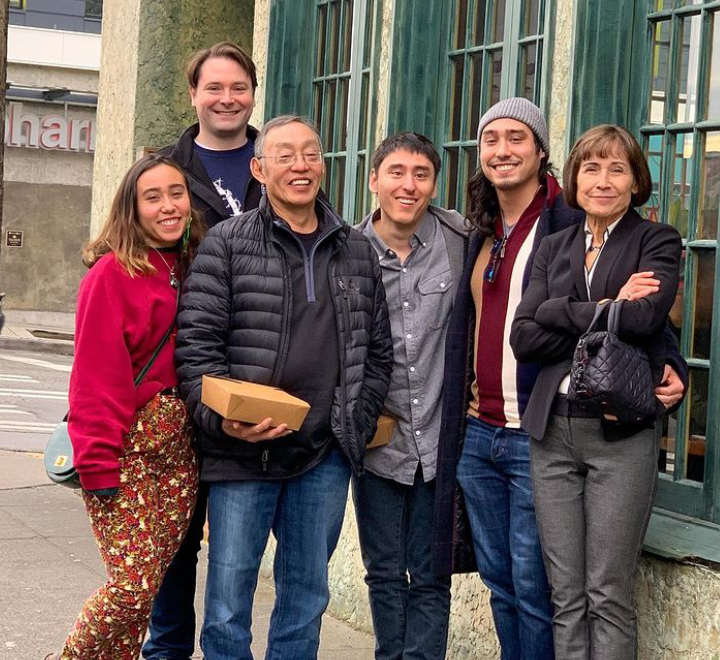Richard Ohashi: The Atomic Bomb Survivor Who Became A Symbol Of Peace
Richard Ohashi, also known as Tsutomu Yamaguchi, is a noun referring to the sole survivor of both atomic bombings in Japan in 1945. He lived in Nagasaki at the time of the second bombing but was on a business trip to Hiroshima when the first bomb was dropped.
Ohashi's survival is a testament to the resilience of the human spirit and the importance of peace. His experience has helped raise awareness of the horrors of nuclear war and the need for international cooperation to prevent future tragedies.
The story of Richard Ohashi is one of both incredible resilience and profound tragedy. It is a reminder of the importance of peace and the devastating consequences of war.
- Who Is Kevin Bacon S Son Travis
- Debbie Cartisano Where Is Steve Cartisano S
- Justin Leonard Golf Channel Bio Wiki Age
- Astrology Birth Chart Of Matthew Sturniolo Tiktok
- Meet Cheyenne Elliott Dionne Warwick S Granddaughter
Richard Ohashi
Richard Ohashi, the sole survivor of both atomic bombings in Japan in 1945, represents the horrors of war, the resilience of the human spirit, and the need for peace. His story encompasses various key aspects:
- Sole survivor
- Atomic bombings
- Hiroshima
- Nagasaki
- Radiation
- Peace
- Resilience
- Legacy
- Humanity
Ohashi's survival is a testament to the strength and resilience of the human spirit. Despite enduring unimaginable suffering, he dedicated his life to promoting peace and understanding. His story is a reminder of the devastating consequences of war and the importance of working together to prevent future tragedies.
Sole survivor
Richard Ohashi is often referred to as the "sole survivor" of both atomic bombings in Japan during World War II. This term signifies his unique and tragic experience of being the only person known to have survived both the Hiroshima and Nagasaki bombings.
- French Montana Says Max B Might Be
- Who Is Evelyn Lozada Dating Queens Court
- Dorinda Medley Bio Net Worth Husband Or
- Where Is Ross Caruso Going After Leaving
- Tiffany Lau Bio Age Wiki Facts And
The connection between "sole survivor" and "Richard Ohashi" is profound. Ohashi's survival is a testament to the resilience of the human spirit. Despite enduring unimaginable suffering, he dedicated his life to promoting peace and understanding. His story is a reminder of the devastating consequences of war and the importance of working together to prevent future tragedies.
The practical significance of understanding the connection between "sole survivor" and "Richard Ohashi" lies in its ability to foster empathy and compassion. By learning about Ohashi's experiences, we can gain a deeper understanding of the horrors of war and the importance of peace. His story can also inspire us to work towards a world free of nuclear weapons and armed conflict.
Atomic bombings
The atomic bombings of Hiroshima and Nagasaki in 1945 were pivotal events in Richard Ohashi's life. He was the sole survivor of both bombings, and his experiences profoundly shaped his views on war and peace.
- Hiroshima
On August 6, 1945, the United States dropped an atomic bomb on Hiroshima, Japan. The bomb killed an estimated 140,000 people and destroyed much of the city.
- Nagasaki
Three days later, on August 9, 1945, the United States dropped a second atomic bomb on Nagasaki, Japan. The bomb killed an estimated 70,000 people and destroyed much of the city.
- Radiation
The atomic bombs released large amounts of radiation, which caused immediate and long-term health effects for survivors. Ohashi himself suffered from radiation sickness and other health problems for the rest of his life.
- Legacy
The atomic bombings of Hiroshima and Nagasaki had a profound impact on the world. They led to the end of World War II and helped to usher in the nuclear age. Ohashi's story is a reminder of the devastating consequences of nuclear war and the importance of working towards peace.
The atomic bombings of Hiroshima and Nagasaki were a defining moment in Richard Ohashi's life. They shaped his views on war and peace, and they motivated him to dedicate his life to promoting peace and understanding.
Hiroshima
Hiroshima, a pivotal city in Richard Ohashi's life, holds profound significance within the broader scope of his experiences. It was the site of the first atomic bombing in 1945, an event that forever altered Ohashi's life and shaped his unwavering dedication to peace.
- Ground Zero
Hiroshima became the epicenter of the atomic blast, leaving a lasting scar on the city's landscape and its people. Ohashi witnessed the devastation firsthand, experiencing the immediate horrors of the bombing.
- Radiation
The atomic bomb released immense radiation, causing widespread sickness and long-term health effects. Ohashi himself suffered from radiation sickness and other health issues throughout his life.
- Symbol of Peace
In the aftermath of the bombing, Hiroshima emerged as a powerful symbol of peace. Ohashi became an ardent advocate for nuclear disarmament, sharing his story to raise awareness of the catastrophic consequences of nuclear war.
- Legacy
Hiroshima's legacy extends beyond its physical devastation. It serves as a constant reminder of the horrors of war and the urgent need for global cooperation to prevent future tragedies.
Through his firsthand account of the Hiroshima bombing, Richard Ohashi played a crucial role in shaping the world's understanding of nuclear warfare. His experiences in Hiroshima fueled his lifelong mission to promote peace and bridge the gap between nations.
Nagasaki
Nagasaki bears immense significance in the life of Richard Ohashi, the sole survivor of both atomic bombings in Japan during World War II. The second of those bombings, which devastated Nagasaki on August 9, 1945, profoundly shaped Ohashi's experiences and his subsequent dedication to peace advocacy.
As a resident of Nagasaki, Ohashi witnessed firsthand the catastrophic aftermath of the atomic blast. The city was decimated, with countless lives lost and widespread suffering endured. Ohashi himself sustained severe injuries and radiation exposure, leading to long-term health issues.
The Nagasaki bombing became a defining moment for Ohashi, fueling his unwavering commitment to abolishing nuclear weapons and promoting global harmony. He dedicated his life to sharing his experiences as a Hibakusha (atomic bomb survivor) and raising awareness about the devastating consequences of nuclear warfare. Through his tireless efforts, Ohashi played a pivotal role in shaping international discourse on nuclear disarmament and the need for peace.
Radiation
Radiation played a pivotal role in the life of Richard Ohashi, the sole survivor of both atomic bombings in Japan during World War II. Exposure to high levels of radiation during the Nagasaki bombing left a lasting impact on Ohashi's health and well-being, shaping his advocacy for nuclear disarmament and peace.
- Acute Radiation Syndrome
Ohashi suffered from acute radiation syndrome, a life-threatening condition caused by exposure to high levels of radiation. He experienced severe burns, nausea, and fatigue, and his immune system was severely compromised.
- Cancer
Radiation exposure increased Ohashi's risk of developing cancer. He was diagnosed with leukemia and other radiation-related cancers later in life.
- Genetic Damage
Radiation can damage DNA, leading to genetic mutations and an increased risk of birth defects in future generations. Ohashi's children and grandchildren have undergone genetic testing to monitor for potential radiation-related health issues.
- Long-Term Health Effects
Ohashi experienced a range of long-term health effects from radiation exposure, including cardiovascular disease, cataracts, and premature aging. He became an advocate for providing comprehensive medical care and support to atomic bomb survivors.
Radiation had a profound impact on Richard Ohashi's life, both physically and psychologically. His experiences as a Hibakusha (atomic bomb survivor) fueled his unwavering commitment to raising awareness about the devastating consequences of nuclear warfare and the urgent need for global cooperation to prevent future tragedies.
Peace
Richard Ohashi's life and legacy are inextricably linked to the pursuit of peace. As the sole survivor of both atomic bombings in Japan during World War II, he witnessed firsthand the devastating toll of war and the importance of working towards a world free from nuclear weapons.
Ohashi dedicated his life to sharing his experiences as a Hibakusha (atomic bomb survivor) and advocating for nuclear disarmament. He believed that peace was not merely the absence of war, but a positive state that required active effort and cooperation among all nations. Through his work with organizations such as the Japan Confederation of A- and H-Bomb Sufferers Organizations (Nihon Hidankyo) and the World Council for Peace, Ohashi tirelessly campaigned for the abolition of nuclear weapons and the promotion of global harmony.
Ohashi's unwavering commitment to peace serves as a powerful reminder of the importance of dialogue, understanding, and cooperation in building a more just and equitable world. His life and work continue to inspire individuals and organizations around the globe to work towards a future free from the threat of nuclear war.
Resilience
Resilience, a hallmark of Richard Ohashi's character, is a multifaceted concept that encompasses his ability to withstand adversity, adapt to challenging circumstances, and emerge with strength and purpose.
- Emotional Resilience
Ohashi's capacity to manage intense emotions, cope with trauma, and maintain a positive outlook despite experiencing unimaginable suffering during the atomic bombings demonstrates his emotional resilience.
- Physical Resilience
Ohashi's physical endurance and recovery from severe radiation-related illnesses, including leukemia and cataracts, exemplify his physical resilience and unwavering spirit.
- Social Resilience
Despite facing discrimination and prejudice as an atomic bomb survivor, Ohashi actively engaged with society, sharing his experiences to promote peace and understanding, showcasing his social resilience and commitment to making a difference.
- Purposeful Resilience
Ohashi's lifelong dedication to advocating for nuclear disarmament and peace, even amidst personal challenges and setbacks, highlights his purposeful resilience and unwavering determination to create a better world.
These facets of resilience, intertwined and reinforcing one another, enabled Ohashi to not only survive unimaginable horrors but also to thrive and make a significant impact on the world, becoming a symbol of hope and perseverance in the face of adversity.
Legacy
Richard Ohashi's legacy is a multifaceted tapestry woven with his extraordinary experiences as a survivor of both atomic bombings in Japan and his unwavering dedication to peace advocacy. Through his life and work, Ohashi left an enduring imprint on the world, inspiring countless individuals and shaping global discourse on nuclear disarmament.
- Atomic Bomb Survivor
Ohashi's firsthand account of the atomic bombings serves as a stark and sobering reminder of the catastrophic consequences of nuclear warfare. His experiences as a Hibakusha(f y) him a unique moral authority and credibility in advocating for peace and nuclear abolition.
- Peace Activist
Ohashi dedicated his life to promoting peace and understanding. He tirelessly campaigned for nuclear disarmament, working with organizations such as Nihon Hidankyo and the World Council for Peace. His unwavering commitment to peace inspired individuals and governments around the world.
- Symbol of Resilience
Ohashi's life is a testament to the indomitable spirit of humanity. Despite enduring unimaginable suffering, he emerged as a beacon of hope and resilience. His story continues to inspire individuals to overcome adversity and work towards a better world.
- Educational Legacy
Through his lectures, writings, and interactions with students, Ohashi played a vital role in educating future generations about the horrors of war and the importance of peace. His legacy as an educator extends far beyond his lifetime, shaping the values and beliefs of countless young people.
Richard Ohashi's legacy is a powerful force for peace, serving as a constant reminder of the devastating consequences of war and the urgent need for global cooperation to prevent future tragedies. His life and work continue to inspire individuals and organizations around the world to work towards a more just and equitable future.
Humanity
Richard Ohashi's experiences and advocacy work illuminate profound aspects of humanity, encompassing resilience, compassion, and the pursuit of peace. His life serves as a mirror, reflecting both the darkest and brightest qualities of human nature.
- Resilience
Ohashi's ability to endure unimaginable suffering and emerge with unwavering strength and purpose exemplifies the resilience of the human spirit. His story inspires hope and reminds us of our capacity to overcome adversity.
- Empathy
Ohashi's deep empathy for fellow survivors and victims of war led him to dedicate his life to advocating for peace. He understood the pain and suffering caused by nuclear weapons and worked tirelessly to prevent others from experiencing similar horrors.
- Courage
Despite facing discrimination and prejudice, Ohashi spoke out against nuclear weapons and war. His courage in sharing his story and advocating for peace demonstrates the power of one voice to make a difference.
- Hope
Ohashi's unwavering belief in the possibility of a world without nuclear weapons inspired countless individuals and organizations. His life serves as a beacon of hope, reminding us that even in the face of great darkness, we must never give up on our dreams for a better future.
Richard Ohashi's legacy is a testament to the indomitable spirit of humanity. His life and work embody resilience, empathy, courage, and hope, reminding us of our capacity for both great suffering and great compassion. His story continues to inspire and challenge us to work towards a world where peace prevails and human dignity is cherished.
Frequently Asked Questions about Richard Ohashi
This section addresses commonly asked questions and clarifies important aspects related to Richard Ohashi's life and legacy.
Question 1: Who was Richard Ohashi?
Answer: Richard Ohashi, also known as Tsutomu Yamaguchi, was the sole survivor of both atomic bombings in Japan during World War II.
Question 2: What were the circumstances surrounding his survival?
Answer: Ohashi was in Hiroshima for a business trip when the first atomic bomb was dropped. He returned to Nagasaki, his hometown, three days before the second bombing.
Question 3: What were the long-term effects of the radiation exposure on Ohashi?
Answer: Ohashi suffered from various health issues throughout his life, including leukemia, cataracts, and cardiovascular disease, as a result of exposure to high levels of radiation.
Question 4: How did Ohashi's experiences shape his life's mission?
Answer: Ohashi became a lifelong advocate for peace and nuclear disarmament, sharing his experiences as a Hibakusha (atomic bomb survivor) to raise awareness about the devastating consequences of war.
Question 5: What was Ohashi's legacy and how is he remembered?
Answer: Ohashi's legacy as a peace activist and symbol of resilience continues to inspire individuals and organizations working towards a world free from nuclear weapons.
Question 6: What can we learn from Richard Ohashi's story?
Answer: Ohashi's life teaches us the importance of resilience, empathy, courage, and hope in the face of adversity, and the urgent need to work towards a peaceful world.
These FAQs provide a deeper understanding of Richard Ohashi's experiences, his advocacy for peace, and his enduring legacy as a symbol of hope and resilience.
His story serves as a reminder of the devastating consequences of war and the importance of promoting peace and nuclear disarmament to ensure a better future for generations to come.
Tips for Building Resilience
Resilience is the ability to adapt and thrive in the face of adversity. It's a skill that can be learned and developed through practice. Here are five tips to help you build resilience:
Tip 1: Embrace a growth mindset.
Believe that you can learn and grow from challenges, rather than being defined by setbacks.
Tip 2: Focus on your strengths.
Identify your strengths and assets, and use them to cope with challenges.
Tip 3: Develop a support network.
Surround yourself with people who care about you and provide support when needed.
Tip 4: Practice self-care.
Take care of your physical and mental health by eating well, getting enough sleep, and exercising regularly.
Tip 5: Learn from your mistakes.
Mistakes are opportunities to learn and grow. Analyze your mistakes and identify what you can do differently next time.
Building resilience takes time and effort, but it's worth it. By following these tips, you can develop the skills you need to overcome adversity and thrive in the face of challenges.
In the next section, we'll discuss the importance of resilience in the workplace and how it can contribute to personal and professional growth.
Conclusion
Richard Ohashi's life and legacy serve as a profound testament to the human spirit's resilience and the urgent need for peace. His experiences as the sole survivor of both atomic bombings in Japan provide a sobering reminder of the devastating consequences of war and the importance of working towards a world free from nuclear weapons.
Through his advocacy and activism, Ohashi became a beacon of hope and inspiration, embodying the power of one voice to make a difference. His message of peace and reconciliation continues to resonate, challenging us to confront the horrors of war and to strive for a future where humanity prevails over conflict.
- Meet Olivia Palermo Parents Douglas Palermo Lynn
- Does Phaedra Parks Own A Funeral Home
- Carolin Bacic Celebrity Wife Wiki Age Height
- Chelsea Gibb Biography Age Height Husband Net
- Where To Find All The Princess Quest

Gymnastics Katelyn Ohashi Parents Think Healthy Life Hot Sex Picture

Who Are Katelyn Ohashi’s Parents, Diana and Richard Ohashi?

Richard Ohashi Age, Net Worth, Height, Bio, Facts, Married